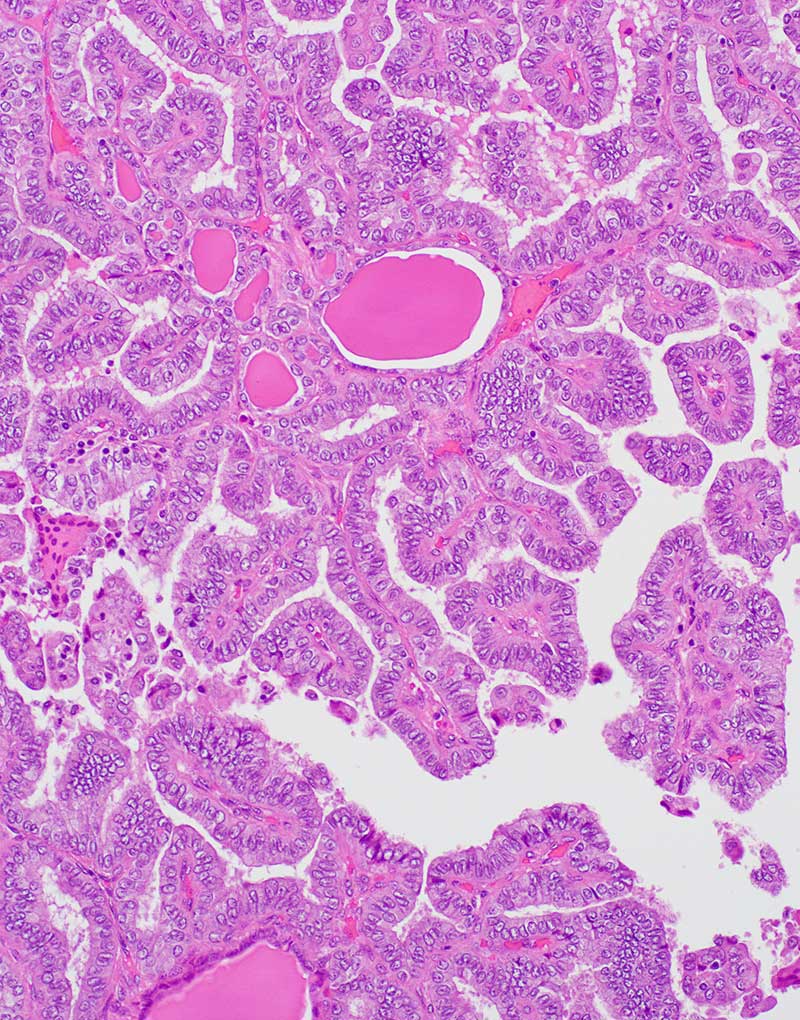Ultrasound-Guided FNA – What is a Fine Needle Aspiration Biopsy
To practice, doctors need 7-12 years of training. Specialists such as Dr. Nadelman acquire additional skills with even more training, such as cytopathology. In cytopathology, a biopsy doctor learns to take a biopsy, which requires evaluating microscopic tissue pieces to determine if a lump is cancerous. A board-certified cytopathologist receives additional training in performing and interpreting a fine needle aspiration biopsy. An FNA doctor must pass an exam and complete ongoing continuing education to maintain board certification.
Dr. Nadelman can perform and interpret fine needle aspiration biopsies, which leads to a more accurate diagnosis. When non-cytopathology doctors perform FNAs, the tissue is considered inadequate, improperly fixed, or too thick to evaluate. The patient may need to return for a repeat biopsy. Moreover, only a cytopathologist can immediately look at the tissue under the microscope while the patient waits. The specialist uses an ultrasound to determine the lump’s exact location to obtain a good sample while minimizing tissue trauma.
If you have a lump and are concerned it might be cancer; you may need a biopsy. If so, a specialist certified in cytopathology is the optimal choice. A specialist can perform the fastest, most accurate test for malignancy using minimally invasive techniques. The procedure is cost-effective and offers quick, often same-day results.
FNA Benefits vs. Surgical Biopsy
Cells can be obtained with surgical biopsies or FNAs. A surgical biopsy is a surgical procedure. It may require anesthesia and can cause tissue trauma and bleeding, which means it takes more time to recover.
If you are looking for surgical biopsy alternatives, a fine needle aspiration biopsy is a good choice. To determine whether a lump is malignant, cancerous cells from the area must be examined under a microscope. Compared to a traditional biopsy, FNAs are faster, can be performed in a doctor’s office, are less expensive, and cause less tissue trauma than a cancer biopsy. A fine needle aspiration biopsy is done with a very thin needle. The appointment can be made quickly, the procedure is much less uncomfortable, and there’s less risk of bleeding or trauma to the tissue.
Fine needle aspiration was once the preferred method used to diagnose breast and other cancers. Unfortunately, too many diagnoses were inaccurate. The primary reason was that doctors were not adequately trained in fine needle aspiration biopsy. One study found that physicians without formal training in FNAs missed up to 25 percent of cancers. Formally trained physicians missed only two percent. As with any technical medical skill, knowledge, experience, and practice make FNAs accurate and valuable.
EARLY SIGNS OF A LUMP
How FNA Detects Breast Cancer Cells and Saves Lives
How FNA Detects Breast Cancer Cells and Saves Lives
Fine Needle Aspiration Biopsy can help to save lives by helping doctors tell the difference between simple fatty tissue and a cancerous lump. Additionally, FNA is a way for doctors to test very small lumps and catch the cancer in the very early stages. This is excellent news because the earlier the cancer gets caught, the better the outcome.
If the cancer goes undetected, it can spread to other parts of your body. This makes it more difficult to successfully treat. Also, the chances of survival reduce with every stage the cancer advances through. This is why early detection is so important.
Get Early Detection Today!
BREAST CANCER BIOPSY
Cancer can be frightening
Cancer can be frightening. However, staying in touch with your body can make it easier to determine if something is not right.
Classification determines how far the cancer has progressed, which determines treatment options and survival rates. FNAs can help a doctor make an earlier diagnosis and classification, which speeds up the time between the cancer diagnosis and treatment in return.
When you arrive for fine needle aspiration, your doctor will sterilize the area. A thin, hollow needle is then inserted into the lump in the breast. Your doctor will extract a sample of cells and send them to the lab for testing. An FNA biopsy helps doctors distinguish between fatty tissue and cancerous lumps. It can also help a fine needle aspiration doctor detect lumps earlier on.
THYROID BIOPSY
Approximately 4-6 percent of thyroid nodules are cancerous.
Approximately 4-6 percent of thyroid nodules are cancerous.
One of the most common types of thyroid cancer is called Papillary Thyroid Carcinoma. While the rate of thyroid cancer has risen in the past decade, mortality rates have not.
To determine if you have thyroid cancer, your doctor uses a thyroid cancer biopsy guided by an ultrasound. The procedure takes just a few minutes. It is typically performed on an outpatient basis with local anesthesia. Your doctor may be able to provide results right away.
If you’re wondering, “where can I find a fine needle aspiration near me?”, you’ve reached the right place. Dr. Nadelman understands the best way to biopsy to give you results faster while minimizing downtime, cost, and trauma. If you need a biopsy, talk to your doctor about FNAs and get a referral. Cancer health is in your hands.
CELINA NADELMAN, M.D.
WE ARE HERE TO HELP
Request an appointment with The Cancer Biopsy Doctor, Celina M. Nadelman, M.D. today.



